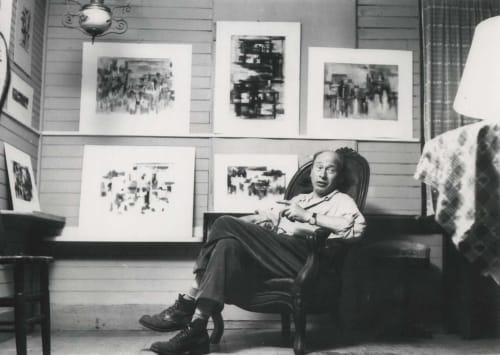One of the major proponents of Abstract Expressionism and influenced by the Neo-Plasticism of Mondrian, Michael Loew circulated among the upper echelons of the New York School of Abstract Expressionists. Despite their opposing approaches to abstraction, he became a longtime friend of Willem de Kooning, whom he met completing WPA projects during the 1930s. Writing on the relationship, Rose C. S. Slivka writes, “They [de Kooning and Loew] generally agreed on most things, including the recognition that although each was on opposite sides of the coin, it was the same coin. ‘Yours,’ said Michael Loew to Willem de Kooning, ‘is the lyrical grid.’ ‘And yours,’ said Willem to Michael, ‘is the song that breaks bars. I could learn plenty from you.’” (“Willem de Kooning,” Art Journal, Fall 1989: pp. 219-221.)
Although Loew began his Neo-Plasticist mode during the 1940s, it was the 50s that brought the full development of his mature style. After WWII, Loew studied with Hans Hofmann and cultivated his sensibility for color effects. He used the grid-structure of Mondrian as a base from which to experiment with the possibilities of the palette; to focus on subtle transitions of tone or harmony of color relationships. Drawing inspiration from life, he transformed subjects into unique patterns of rectangles or color fields, naming the final composition according to the dominant colors. He exhibited these works at the Stable Gallery Annuals, beginning a full and successful exhibition career.
In 1957, Loew participated in the International Assoc. of Plastic Arts Touring Exhibition, Contemporary American Painting as juror and exhibitor. Here he exhibited alongside Milton Avery, Samuel Adler, Josef Albers, de Kooning, Reinhardt, Walkowitz and others. The same year he gained representation at Zabriskie Gallery, next to Johns, Motherwell, and Rauschenberg. A recognized pillar of American Modernism, Loew maintained an active teaching and exhibition schedule until his death in 1985.
